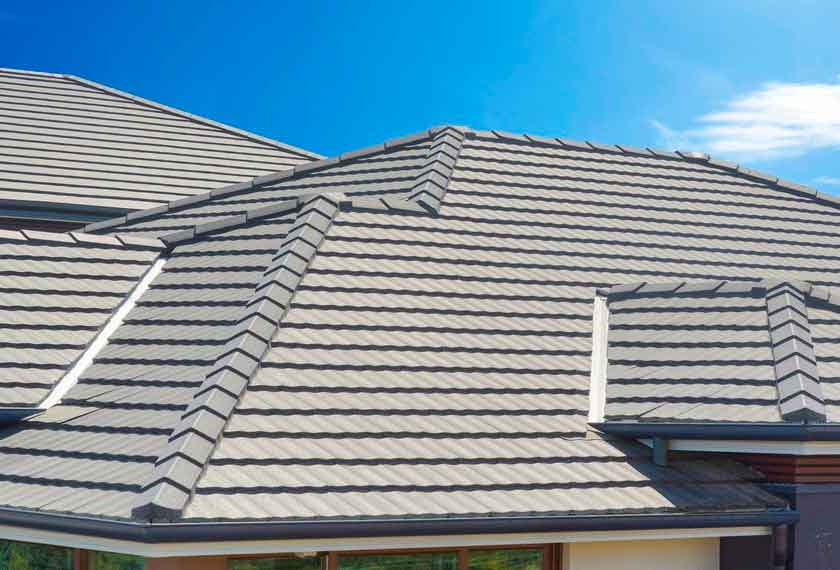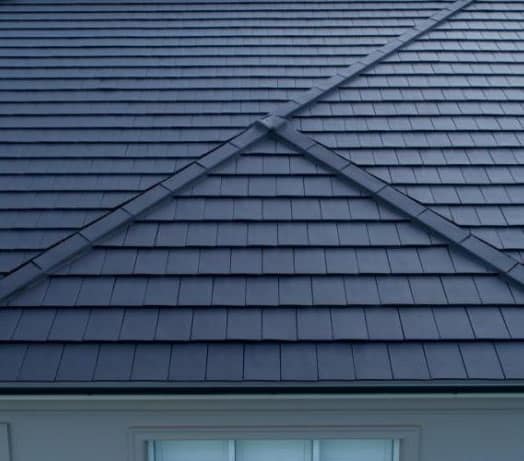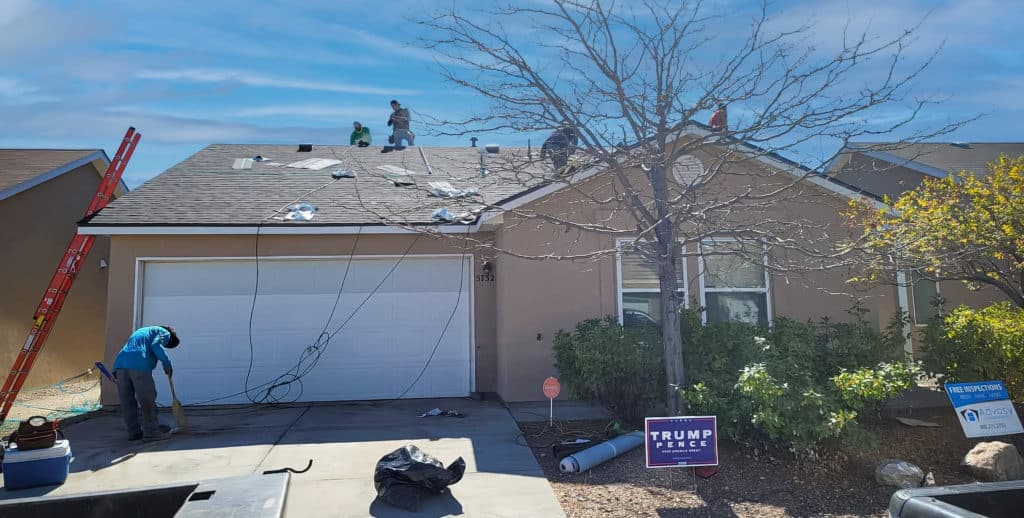Monsoon season is a time of year that brings heavy rains, strong winds, and high levels of humidity. It can cause severe damage to your Mesa roof if the proper steps are not taken to prepare for it. This article will provide an overview of how best to protect your roof from monsoon season in order to ensure its longevity and integrity.
The first step in preparing your Mesa roof for monsoon season is inspecting it for any existing damage or signs of wear and tear. If you find anything, repair it as soon as possible before the stormy weather sets in. Additionally, check all gutters, drains and valleys to make sure they are clear so water doesn’t accumulate on the roof or seep into any cracks or crevices. Cleaning out debris such as leaves, twigs, pine needles or other organic material should also be done prior to monsoons arriving; this reduces the risk of clogged drainage systems which could lead to flooding.
Inspect Your Roof
Monsoon season is a critical time for homeowners to ensure their roof is in proper condition. A crucial first step when preparing mesa roofs for the monsoon season is to inspect them. This involves checking for any signs of damage, such as missing tiles or worn-out shingles. Additionally, check that all gutters and downspouts are clear from debris, and make sure no water can seep into your home through cracks in the roof or around vents and chimneys.
It is also important to replace any damaged materials on your roof with weatherproof materials before the start of monsoon season. Regularly clean out rainwater collection systems in order to prevent clogging or overflowing during heavy rainfall periods. And lastly, be mindful of how much weight you put on your roof by keeping it free from snow accumulation during winter months so it does not collapse under additional pressure due to heavy downpours during summertime storms. By taking these steps prior to monsoon season, you’ll be better prepared should severe weather hit your area.
Clean Debris And Clutter
The second step to preparing a mesa roof for monsoon season is cleaning debris and clutter. This includes removing leaves, branches, bird droppings or any other item that may have accumulated during the year. After these items are removed, it is essential to look out for signs of damage such as water stains or mold on the ceiling which could indicate leakage in the roofing system. It is important to ensure all potential entry points are sealed off with caulk or sealant; if needed any damaged shingles should be replaced before monsoons start.
It can also be beneficial to apply products like elastomeric coating which will create an additional protective layer against moisture and ultraviolet rays from sun exposure. Finally, regular maintenance throughout the duration of monsoon season is recommended by experts so that any signs of wear-and-tear can be quickly identified and repaired accordingly.
Seal Any Openings
The third step to prepare a mesa roof for monsoon season is sealing any openings. This is an important precautionary measure in order to avoid water seeping into the roof, which can cause serious damage if left unchecked. To ensure optimal protection from the elements, it is essential that all gaps and holes are sealed properly:
First, inspect the entire surface of the roof for potential entry points such as cracks or missing shingles. Second, use caulk or putty to fill up these small crevices and seal them off securely; this will help prevent moisture buildup inside while also keeping away pests like rodents and insects. Lastly, apply waterproof paint to areas with exposed wood or metal components; this will further protect against long-term water exposure.
By taking these precautions beforehand, homeowners can rest assured knowing their roofs are ready to withstand whatever Mother Nature throws at them during monsoon season.
Check Gutters And Downspouts
Monsoon season can wreak havoc on mesa roofs, so it is important to take time and prepare the roof for this weather event. An essential step in preparing a mesa roof for monsoon season is checking gutters and downspouts. Gutters are an integral component of keeping water away from the base of the house, while downspouts are designed to safely channel rainwater away from the foundation walls.
Checking these components involves looking at them closely to ensure they are not blocked with debris or broken, as well as making sure that they are clear of any vegetation growth. Additionally, it is wise to make sure all screws and fasteners used to attach gutters and downspouts remain tight throughout the duration of the monsoon season. If any repairs need to be made, they should be done prior to heavy rains falling. Furthermore, extensions may need to be added onto existing downspouts if necessary in order to direct water further away from home foundations; this will help prevent flooding during strong storms when large amounts of rainfall occur over short periods of time.
Install A Roof Cover
Monsoon season can be a stressful time for homeowners, especially when it comes to the roof of their house. Taking preventative steps before monsoon season is essential in order to ensure that your home remains safe and secure during this period. One such step is installing a roof cover on your mesa roof.
A roof cover provides many benefits which will help protect your mesa roof against damage caused by heavy rains and winds associated with monsoons:
* It acts as an extra layer of protection from water-related damages, like leaks or flooding.
* The material used for a roof cover can provide insulation and reduce heat loss through the attic space.
* A well-installed roof cover also adds aesthetic value to the exterior of your home.
Installing a roof cover requires some manual labor but if done correctly, you’ll have peace of mind knowing that your mesa roof is better prepared for any storms or rain that may come its way during monsoon season. By investing in quality materials and following installation instructions carefully, you can make sure that your mesa roof is ready for the wetter months ahead.
Trim Trees And Shrubs
Trimming trees and shrubs around the Mesa roof is an important step in preparing for monsoon season. This can help reduce the amount of debris that might accumulate on the roof, as well as preventing branches from damaging it during storms or high winds. It is recommended to cut back any overhanging tree limbs, ensuring they are at least three feet away from any part of the structure. Additionally, trimming bushes and other vegetation will ensure that no leaves or twigs get stuck between shingles on the roof.
This task should be undertaken by a professional with experience in pruning trees and shrubs, who can accurately assess which parts of each plant need to be trimmed or removed without putting either people or property at risk. Once completed, homeowners are advised to inspect their rooftop regularly throughout monsoon season for signs of damage caused by rainfall or windy conditions. Taking these steps now can save time and money later when repairing storm-related damages on your Mesa Roof.
Repair Or Replace Shingles
The seventh step in preparing a Mesa roof for monsoon season is to repair or replace shingles. Damaged, warped, curled and missing shingles can cause water to collect on the roof instead of running off, leading to leaks and other problems during heavy rains. Homeowners should inspect their roofs closely for signs of wear and tear before the storms arrive. If damaged shingles are found they should be replaced with new ones that match the existing material as closely as possible in terms of size, shape and color.
It is also important to check around flashing such as chimneys and vent pipes regularly to ensure it has been properly sealed. Flashing typically rusts over time due to exposure to moisture which can allow water through into the home. Replacing any faulty pieces of flashing will help keep your home safe from flooding during wet weather conditions. It may also be necessary to add additional sealant where needed to prevent further damage caused by rainwater buildup on the roof.





